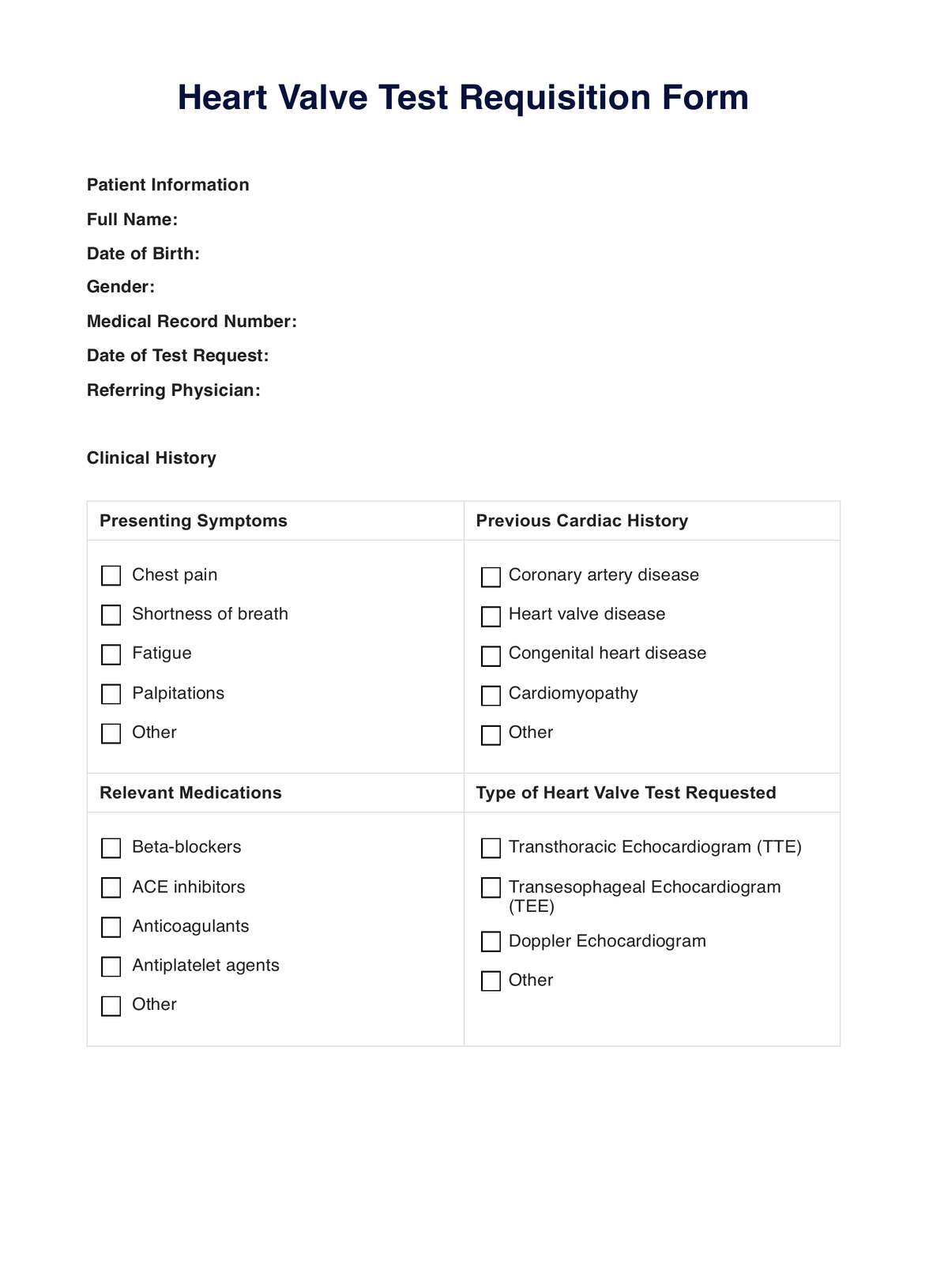The first diagnostic measure is usually auscultation, a physical exam that involves listening to the heart and any unusual sounds or murmurs with a stethoscope.

Heart Valve Test
Learn more about the different types and symptoms of heart valve tests, their benefits, and how they help diagnose heart valve problems with this comprehensive guide.
Heart Valve Test Template
Commonly asked questions
An echocardiogram is a noninvasive ultrasound to measure blood pressure and assess the heart's structure, function, and blood flow through the valves. It is the primary diagnostic tool for heart valve problems and can provide detailed information about the heart's structure and function.
A stress echocardiogram is a variation of a standard echocardiogram performed during physical exertion, such as on a treadmill or stationary bike. It helps assess how the heart responds to exercise and can identify valve problems that may occur during physical activity.
EHR and practice management software
Get started for free
*No credit card required
Free
$0/usd
Unlimited clients
Telehealth
1GB of storage
Client portal text
Automated billing and online payments











